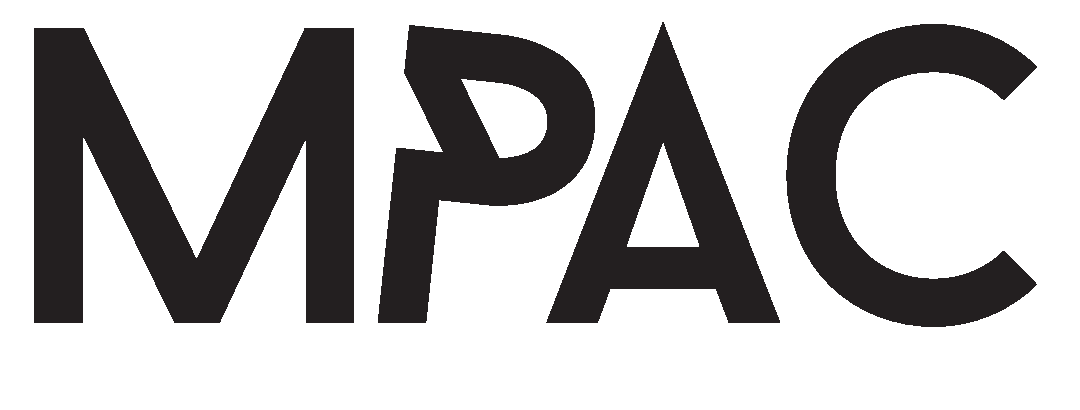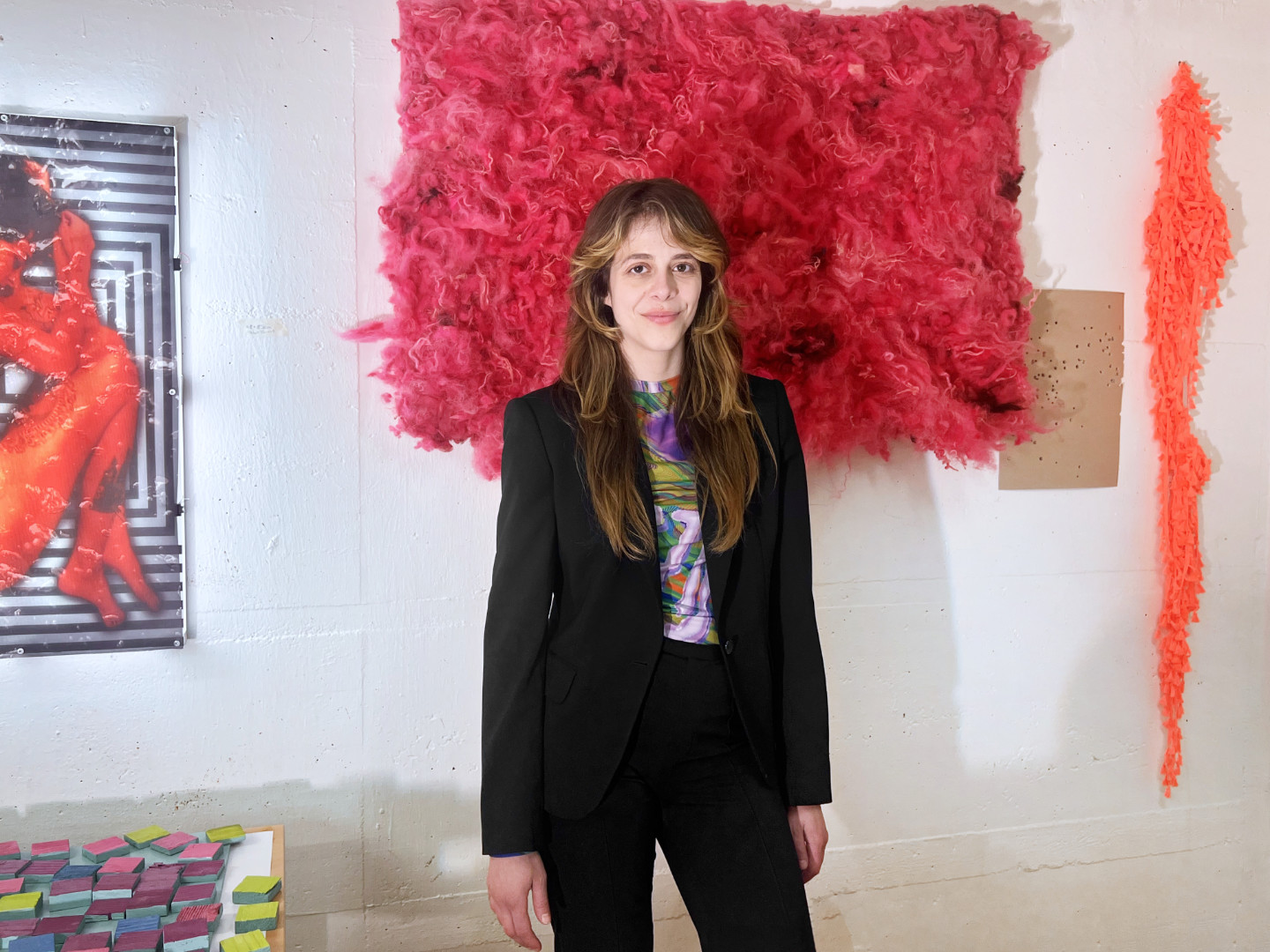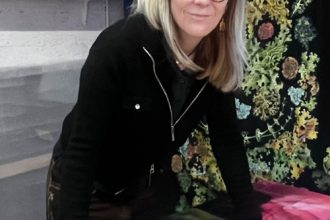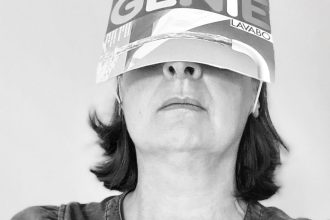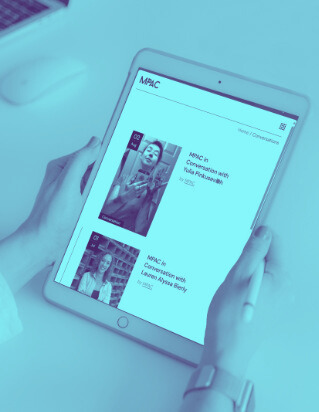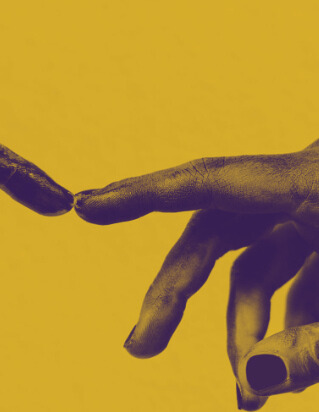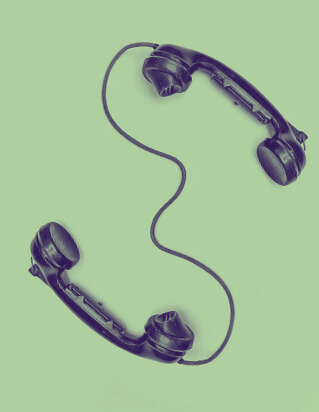In the Studio with Leandra Agazzi
Leandra Agazzi’s installations and wall pieces are defined by her distinctive use of gridlines, forming intricate, mystical compositions consisting of intersecting horizontal and vertical lines. Her grids extend across materials that reflect her artistic thinking and evolution—from raw organic elements of nature such as tree resin, beeswax, avocado seeds, nettle plants, and rosehip berries, to a fusion of industrial materials including, chromed steel, plexiglass, mobile phone connected wall sculptures, lightboxes, and holograms.
At times, the patterns within the grids become the primary focal points; at other times the focus is on the objects they frame, captivating in their design, transforming their surroundings with an orderly yet hypnotic presence. Rich in scale and materiality rooted in the elements of earth, Leandra’s works share a unique quality – an allure that captivates both the viewer and the space they inhabit – evoking a silent yet powerful force of resilience.
At the core of her artistic vision, Leandra believes that humanity and nature must work together and only then can something greater emerge. This core belief is deeply rooted in her entire artistic approach, shaping her material choices, processes and the interconnected energy her artworks radiate.
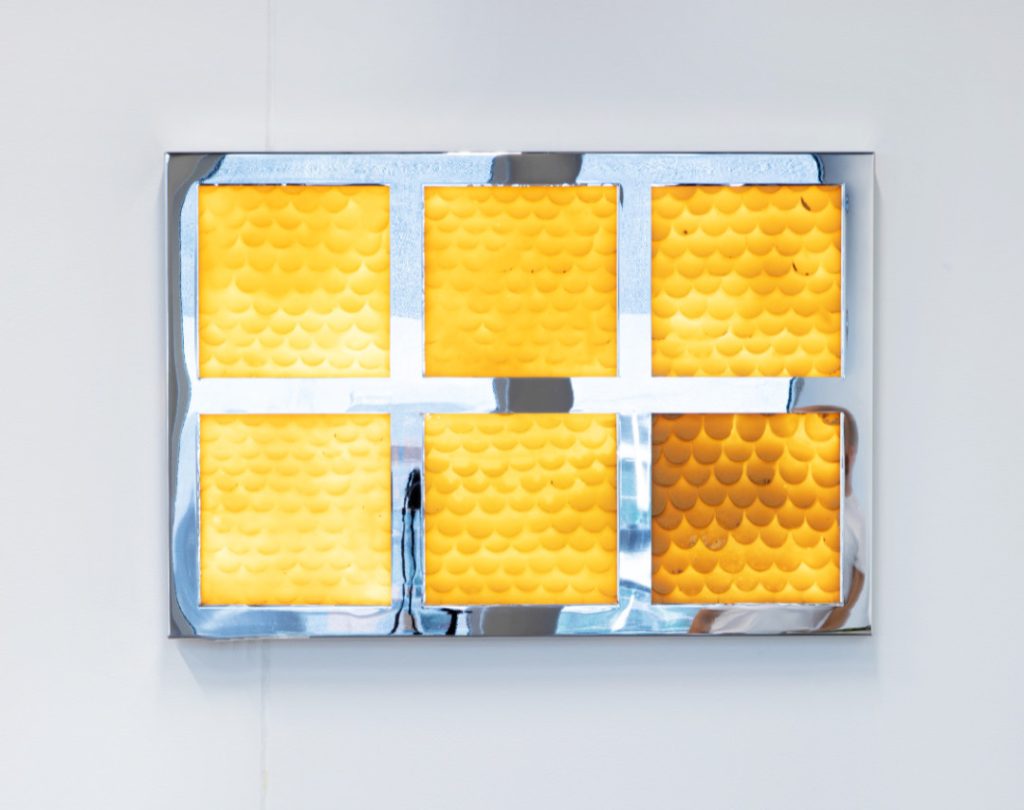
Beeswax, wood, led, whitewash
120 x 80 x 5 cm
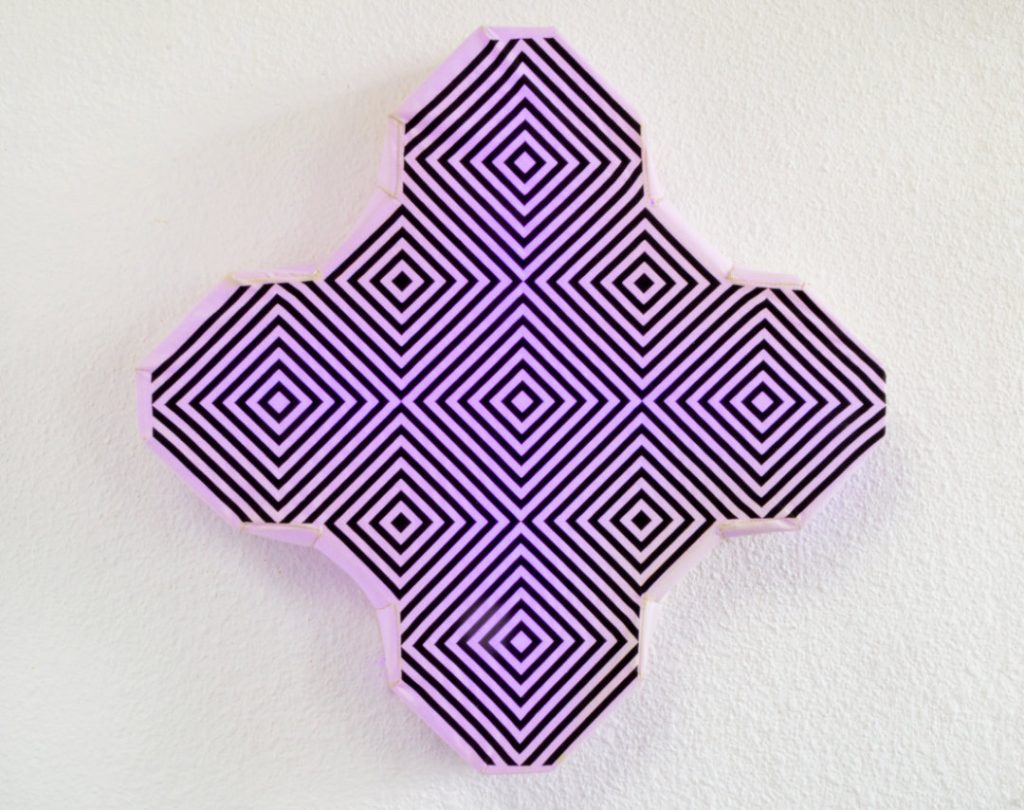
Screen print on fabric, led, Plexi
50 x 50 x 8 cm
This tension between physicality and fluidity is central to Care Less (2021), an installation that subtly unsettles its surroundings. At its center, a nest, woven from the strong yet flexible branches of a willow tree, stands two meters tall with an almost ethereal presence. Illuminated within by an LED light, it feels both grounded and weightless, as if it might lift off at any moment.
Encircling this organic form, Leandra’s signature geometric grids extend across the walls and floor, framing the nests’ fluid, instinctual structure. Her grid lines, at times orderly and at times irregular, stand in contrast to the imposed precision of the exhibition space with its rules, regulations, fire codes and controlled air system. The grids allow the nest to hold its own habitat, refusing to be contained by the technical order that surrounds it.
The willow branches, gathered by Leandra from farmers in the region where she grew up, are cut by human hands each year, allowing them to grow stronger, embodying a natural reciprocity, a quiet collaboration between humans and nature that helps sustain both. The nest, remaining closer to the wild, takes over the clean lines of the exhibition space with an organic, mystical aura. It is a home, perhaps to something unseen, something unknown, a reminder that nature does not simply give in to structure, but rather coexists with it, sometimes in harmony and care, and sometimes in tension.
This tension between physicality and fluidity is central to Care Less (2021), an installation that subtly unsettles its surroundings. At its center, a nest, woven from the strong yet flexible branches of a willow tree, stands two meters tall with an almost ethereal presence. Illuminated within by an LED light, it feels both grounded and weightless, as if it might lift off at any moment.
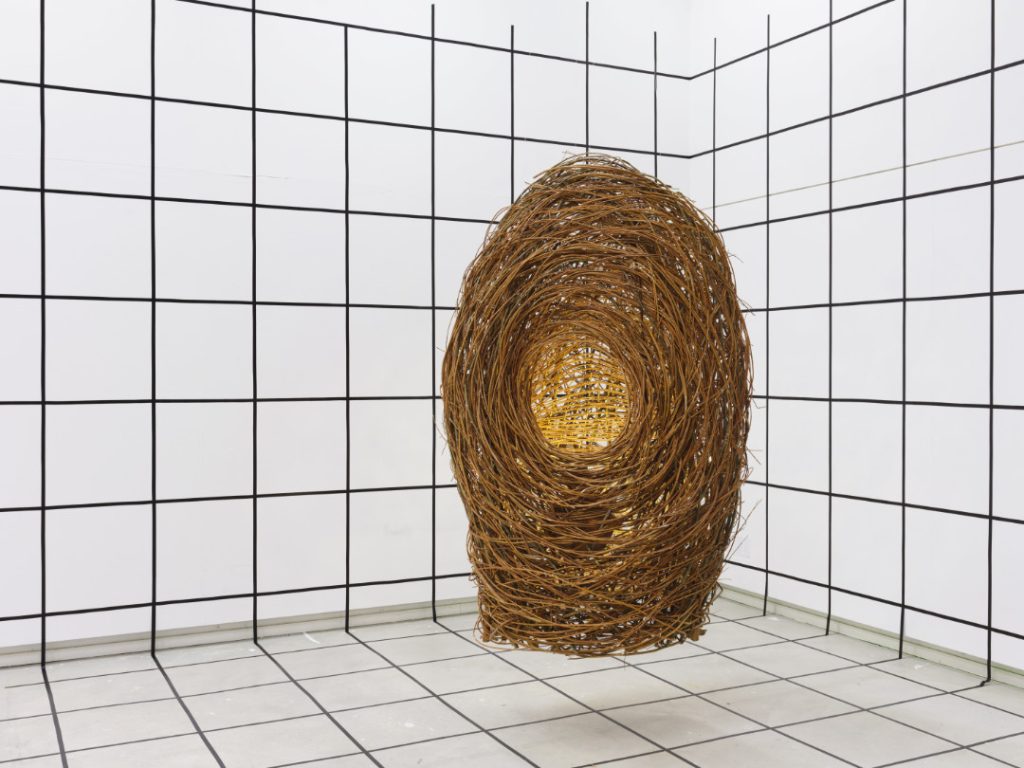
Willow rods, tape, LED light
400 x 400 x 400 cm
Leandra herself carries a similar aura much like her artworks, an organic quality that fills the spaces she enters. A force of interconnection, she believes in the transformative power of art and collective work and is a visionary, unafraid to lead her community forward with instinct, energy, and purpose.
Born in 1994 in Zurich to creative parents – her father a jazz musician, her mother deeply connected to nature and animals, Leandra’s childhood was split between Italy and Switzerland. It was her time in the family home in the Swiss countryside that had the greatest impact on her. There, she and her sister had access to an activity room that opened into the garden as well as into the vast landscape of the countryside. This is where she started drawing, painting and experimenting with materials, learning to create without excess, and understanding the value of sustaining resources.
This room also gave her a profound connection to nature. She grew up caring for all types of animals, learning from an early age the fragility of life, the delicate boundary between life and death, and humans’ essential dependency on nature. At the core of her artistic vision, Leandra believes that humanity and nature must work together and only then can something greater emerge. This core belief is deeply rooted in her entire artistic approach, shaping her material choices, processes and the interconnected energy her artworks radiate.
Meteorite Map (2023), a luminous, living sculpture, inspired by Earth’s craters, captures Leandra’s artistic vision. Craters, hollow shaped landforms where meteorites have fallen, bring unknown minerals to our planet, changing its composition. Leandra maps these impact sites with plants, each area marking a different country. A water pump is hidden within the sculpture, evoking a multi-sensory experience through touching, hearing, and seeing the work come to life.
These plants can thrive without soil, sustained solely on special pink light and moisture. Meteorite Map is a sculpture that breathes, lives, and grows only with a little care. Its presence is a challenge to our own existence towards a resource-scarce future. What will survival look like? Our fragility stands still. Could a deeper kinship with other species emerge? “The lines are blurry,” Leandra says. “And the separation is fluid.”
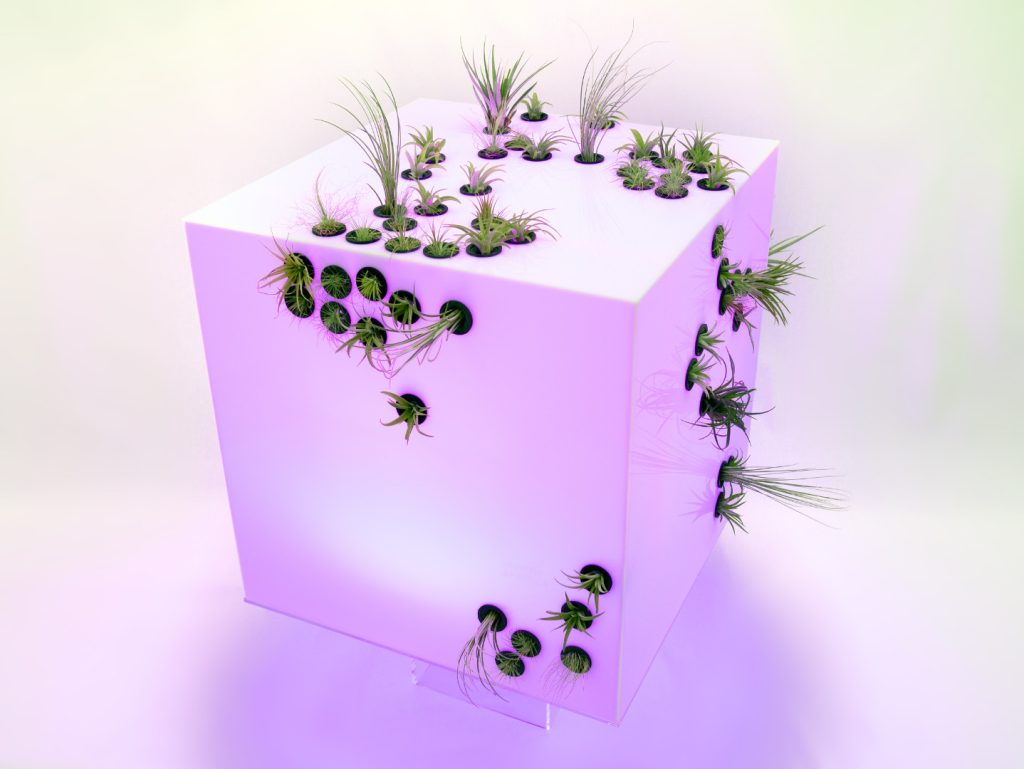
Meteorite Map is a sculpture that breathes, lives, and grows only with a little care. Its presence is a challenge to our own existence towards a resource-scarce future.
Leandra had one clear goal in mind when preparing for her exams, to study art, with no backup plan. She aimed for the Zurich University of the Arts, where she earned her Bachelor of Fine Arts from 2018 to 2021, followed by a Master’s in Fine Art from 2021 to 2023.
“The early years of study were not easy,” says Leandra, “There were too many voices, too many teachers, too many opinions.” For a while, she felt frustrated with herself, convinced not only that she could do better but that she could also express herself more clearly within the polyphonic structure of the art education system. Leandra recalls certain teachers like Marianne Müller inspiring her to find her own voice during these times. Müller would give Leandra only a few key directions but very crucial ones that would ignite Leandra’s vision and fuel her with a rapid surge of creative energy.
Already in her first year, Leandra created her own experimental platform, an independent space to exhibit, explore materials, make mistakes, and grow. She walked into Dynamo, a cultural center in Zurich, and asked for a room to exhibit her artworks. That’s where her first three exhibitions took place. Her experiences at Dynamo then led her to establish her own exhibition space, Studio Flüelastrasse, in the second year of her bachelor’s degree. Over time, she produced 17 exhibitions there, giving visibility not only to her own artworks but also to other artists, many of whom remain part of her artistic community today.
In 2023, she transitioned Studio Flüelastrasse and created FOMO Art Space at a new location. FOMO is an art platform and an association driven by her vision to not only exhibit contemporary art, but also to act as a catalyst for social interaction and community movement. In collaboration with Swiss and international artists, she has since organized 23 exhibitions at FOMO, with a fully planned exhibition program for 2025 ahead, expanding the community of artists while fostering a deeper creative dialogue.
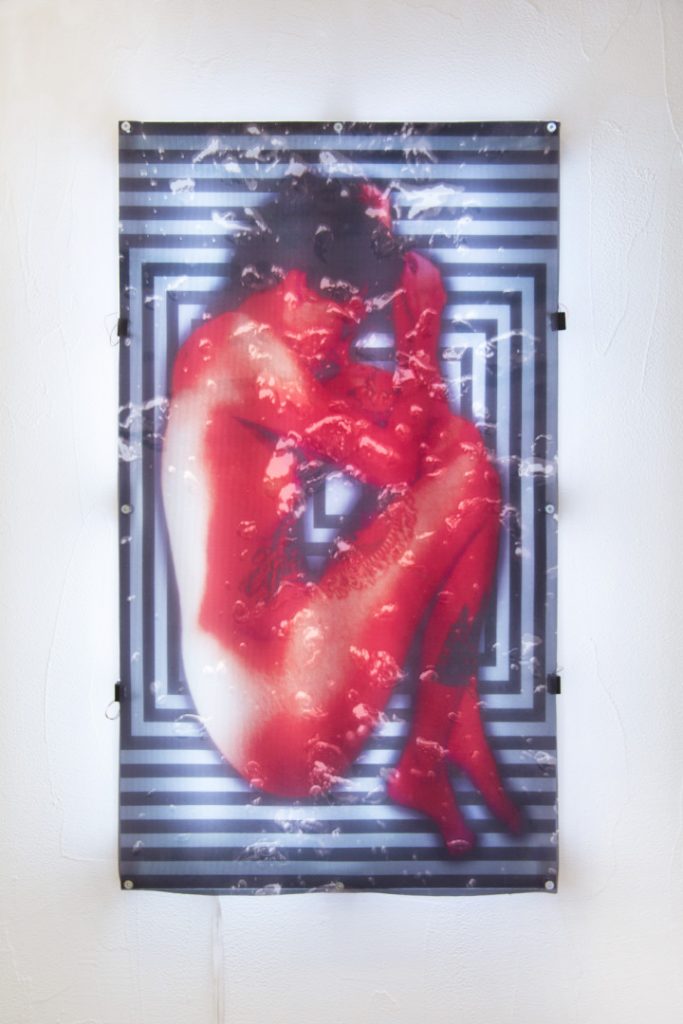
Print on paper and foil, lightbox, fan
48 x 80 x 8 cm
This ongoing exchange between artists, ideas and spaces fuels Leandra’s own artistic practice while opening doors for further collaborations. It is within this expanding dialogue that she created Cryosleep Tank (2024), a wall sculpture inspired by the idea of temporarily slowing down or even stopping biological functions and consciousness of the body to preserve life. Positioned at the intersection of science fiction and myth, this idea comes to life as Leandra transforms herself into an artwork: a body in deep sleep, surviving a long journey and waking up unchanged.
Cryosleep Tank (2024), a wall sculpture inspired by the idea of temporarily slowing down or even stopping biological functions and consciousness of the body to preserve life.
Commissioned for the Manifests exhibition series under the artistic direction of ENTERPRISE INTERNATIONAL in Japan, Leandra was unable to attend the second exhibition in person. This led her to the idea of sending herself in a sleeping tank. The sculpture is exactly the size of a package that can be shipped via regular post. Designed with ventilators and a moving first layer and set against the background of Leandra’s signature grids, the artwork creates an illusion, an energetic interplay of light, movement, body and material that immerses the viewer into an alternate reality, blurring the boundaries between science and myth.
I was very curious to learn how she found the idea and the courage to create exhibitions outside of the university in her very first year of art studies. When I asked her, Leandra laughed, her laughter filling the room. “I just had this voice inside me telling me to simply do it,” she said. “So, I did.”
Leandra has followed that voice since childhood, in the activity room of her family home, where she discovered her passion for symmetry, squares, and linear patterns. She remembers how she always wanted to create work that felt alive, vibrating with energy and connection. She also sees her life as an artist’s life in everything she does, never compartmentalizing her different responsibilities.
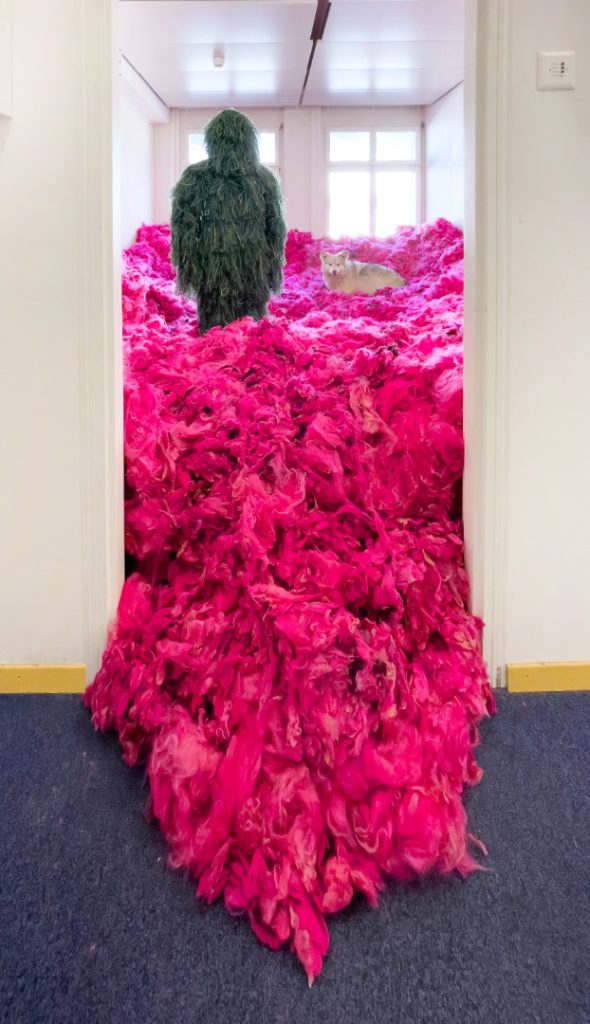
This brought me back to my very first question to Leandra, how can she shift focus and dedicate her attention to different roles she holds such as her art practice, her role as president and founder of FOMO, as well as her work as a mentor? Without hesitation, she answered with ease, saying “Being an artist is a lifestyle. When you know you are an artist, you do everything in an artist’s way.”
Her vision continues to expand. She plans to increase collaborations within FOMO while improving ways of working by delegating certain responsibilities, eliminating repetitive tasks, and fostering simplified processes. Her goal for the near future is to add new team members. At the same time, Leandra is opening another space in central Zurich at the end of March, collaborating within a team of four. This time, the focus is on promoting local contemporary artists by selling their works through Mint, a new platform dedicated to offering small to medium scale artworks in the heart of Zurich.
Leandra Agazzi’s upcoming exhibition with Karl Schmitt, curated by Lark Ring, will take place at FOMO opening on June 13th during the Zurich Art Weekend.
